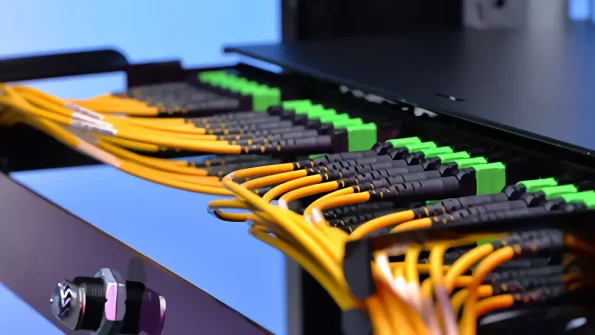This article will bring you what is the difference between MPO and MTP® Fiber? Although both MPO and MTP® Fiber are easy to use and more suitable for cable management and wiring, MPO and MTP® Fiber are different in terms of connector type and shell, as well as performance, etc. Let’s take a look at the details below!
MPO And MTP® Fiber Difference between
When designing high-bandwidth fiber communication systems, you have to pick from a wide range of tools and resources. Optimizing the system is the key to providing the needed performance within budget constraints.
This optimization requires considerable study and comparison, and there are countless opportunities to make small but meaningful upgrades throughout the design. A great example of this is fiber connectors. For any given fiber-optic network, you have plenty of termination options. Among those are MPO and MTP® fiber. What makes these connections special? What distinguishes them from each other?
This quick guide will tell you what you need to know.
What Is MPO Fiber?
Multi-Fiber Push-On (MPO) is a connection type for fiber optic communications. It’s designed for high-speed communications, and more specifically, it provides high-density termination. By allowing more fibers to terminate in a single connector without significant interference or losses, MPO is a common connection type for 40G and 100G data centers.
Originally, this connection type included a 12-fiber single-row connection. Over the years, updates and redesigns have produced MPO connectors that use 8 or 16 fibers in a row, and those rows can stack to provide 24, 36, or even 72 fiber connections in a single termination.
MPO is standardized by the IEC and TIA, making it easy to use and universally compatible with other MPO connections.

What Is MTP® Fiber?
Multi-fiber Termination Push-on (MTP®) is another connection type for fiber optic communications. It also provides high-density termination for high-speed communications applications. In fact, it’s fair to call MTP® a specialized, higher-performance version of MPO.
MTP uses the same fiber arrangements as MPO. While doing this, it provides subtle but important design enhancements that reduce wear, lower insertion losses, and ultimately improve optical signals and mechanical performance. You get the same 40G and 100G performance capacity with MTP®, but the physical connections are more durable and reliable.
Comparing MTP® and MPO
If MTP® is an improvement on MPO connector designs, then it stands to reason that the two have more in common than not. So, what are the key distinctions? What changes justify calling MTP an enhancement? There are several key distinctions, but the two that are clearest and easiest to understand are the change to floating ferrule and the redesigned guide pin shape.
Floating Ferrule
One major distinction between MPO and MTP® is the use of MT and floating ferrule. MPO connectors use MT ferrule. This helps with fiber alignment and maintaining precision during the connector’s molding processes.
MTP® upgrades to floating ferrule. It accomplishes the same goals, but the floating design helps the connectors maintain physical contact while under load or strain. Essentially, the floating ferrule is a more durable and reliable design option.
Added to this is the change in material choice. MPO connectors use plastic pins and clamps. Meanwhile, MTP® uses metal for these functions, improving durability substantially.
Pin Shapes
Another key distinction between MPO and MTP® rests in the shape of the guide pins. MPO uses traditional, flat-ended guide pins. These pins are great for alignment, but their shape allows them to damage the high-precision connections over time. Basically, the blunt design allows for contact that generates wear as the connectors are used.
MTP® solves this problem with a simple design change. The guide pins are elliptical instead of blunt. This rounding on the pins reduces wear while maintaining good contact and holding up to tolerance expectations. Ultimately, MTP® fibers last longer because of this shape change.
Bottomline on MTP® and MPO
Here’s the bottom line. MPO is a great connection design. It provides an efficient, high-quality way to connect large numbers of fibers in a single termination. This is ideal for data centers and other high-bandwidth applications.
MTP® caters to the strengths of MPO while providing enhancements that solve specific problems. MTP connections are more reliable, and the fiber systems terminating in those connections will typically last much longer. When you’re making long-term investments in your fiber optics infrastructure, MTP is certainly worth considering.










